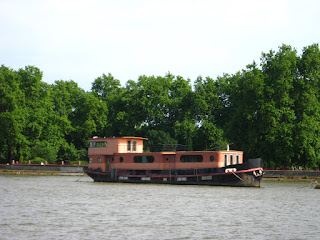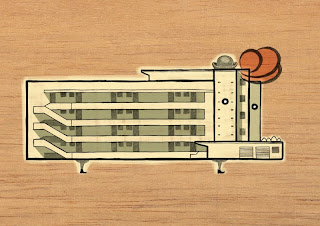
One of the things I enjoy most doing is exploring. The day I went to the Richard Long exhibition at Tate Britain back in the summer of 2009 it opened my eyes the way he creates art out of his walks in the wilderness. It showed me a way of relating my walks and cycle rides with my architecture illustration work. It is during one of these long random walks or the day I cycle to somewhere new or divert form my usual routes that I might see something that would give me an idea for my next illustration. I some times do a few sketches but I normally end up taking more photos of inanimate things than is healthy. I might later use them in a digital collage.
This image is from the day I went out to discover the area around Battersea Park. Starting and ending in Victoria station my only destination was the park so I walked following my intuition only. Once back at home I mapped the route on Google Earth and got this abstract shape. I find it very interesting as it can say a lot about one’s personality and interests in a way.









